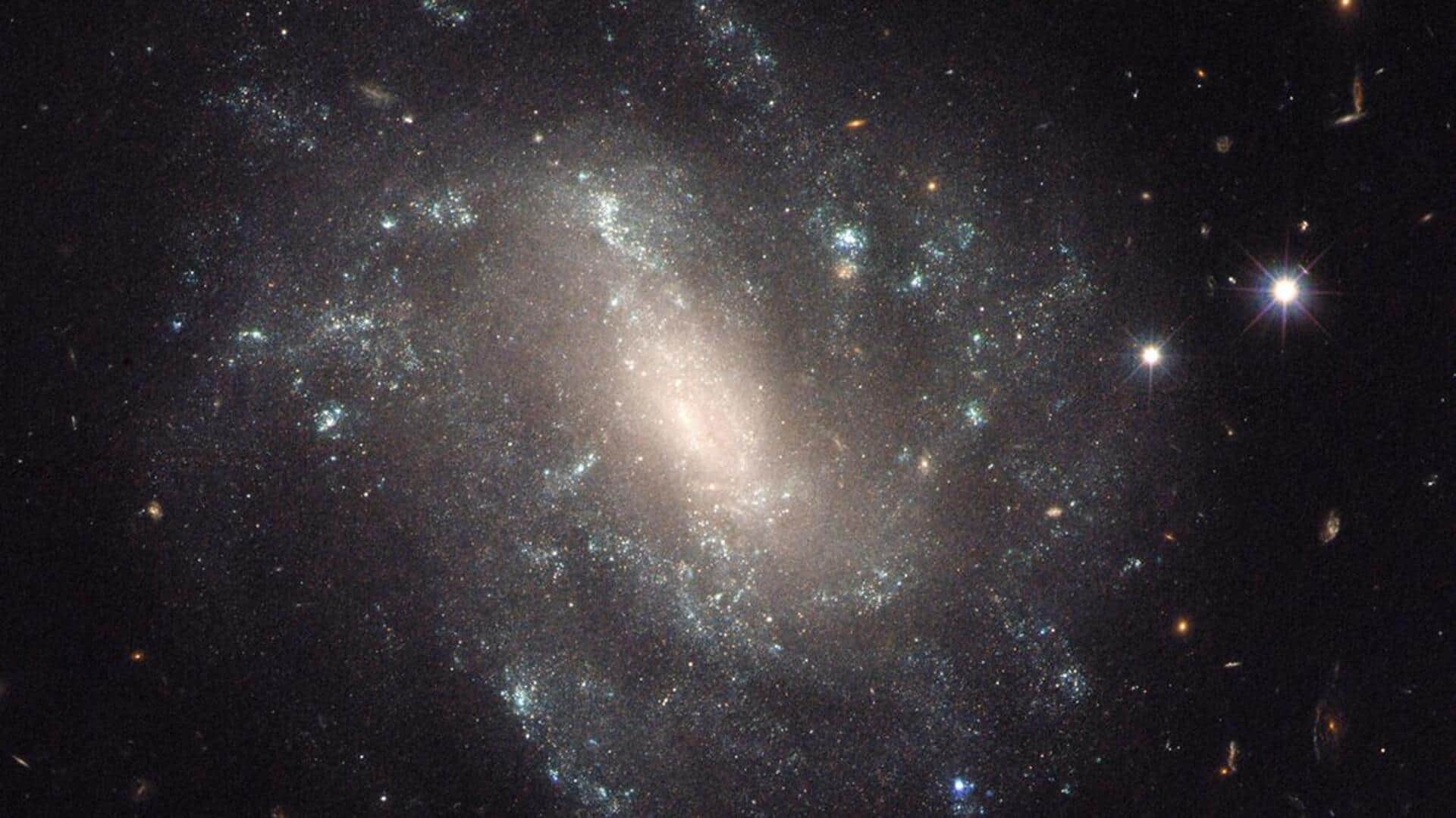
JWST measures the universe's expansion rate but scientists are puzzled
What's the story
NASA's powerful James Webb Space Telescope (JWST) has confirmed the expansion rate of the universe previously measured by the Hubble Space Telescope. The rate at which the universe is expanding, or the Hubble constant, is among the key parameters for understanding the cosmos, says NASA. However, the discrepancy between the different methods of measuring the universe's expansion rate, called the Hubble tension, continues to puzzle scientists.
Details
Unraveling the mystery of Hubble tension
Scientists aren't entirely sure of the value of the Hubble constant. One method of measuring Hubble constant involves examining objects from the early universe, like frozen acoustic waves. The other method measures distances to objects with known intrinsic brightness, like Type Ia supernovae or Cepheid variable stars. The first method gives an expansion rate of about 67 kilometers per second per megaparsec, while the second yields around 73 kilometers per second per megaparsec—the difference between the two is Hubble tension.
Variable stars
Cepheid variables: Key to measuring cosmic distances
"[Cepheid variables] are the gold standard tool for the purpose of measuring the distances of galaxies a hundred million or more light years away, a crucial step to determine the Hubble constant," said astrophysicist Adam Riess. "Unfortunately, stars in galaxies are crowded together in a small space from our distant vantage point and so we often lack the resolution to separate them from their line-of-sight neighbors." Hubble aimed to solve this issue, but its near-infrared observations still contained some uncertainty.
JWST
JWST's observations are in line with Hubble's 'noisy' data
JWST is primarily equipped to detect near-infrared and mid-infrared wavelengths. Researchers first calibrated JWST using a galaxy with a known distance before observing Cepheids in other galaxies. JWST observed 320 Cepheids, significantly cutting the noise found in Hubble's data. Despite Hubble's noisy data, its distance calculations still agreed with JWST's observations. This means that the Hubble tension cannot be attributed to human error in this case, but the cause of the tension remains unknown.
Official words
'Mystery of Hubble tension deepens'
"With Webb confirming the measurements from Hubble, the Webb measurements provide the strongest evidence yet that systematic errors in Hubble's Cepheid photometry do not play a significant role in the present Hubble tension," Riess said. "As a result, the more interesting possibilities remain on the table and the mystery of the tension deepens." One of the leading causes behind the Hubble tension could be dark energy—an unknown form of energy. Its effect is accelerating the expansion of the universe.